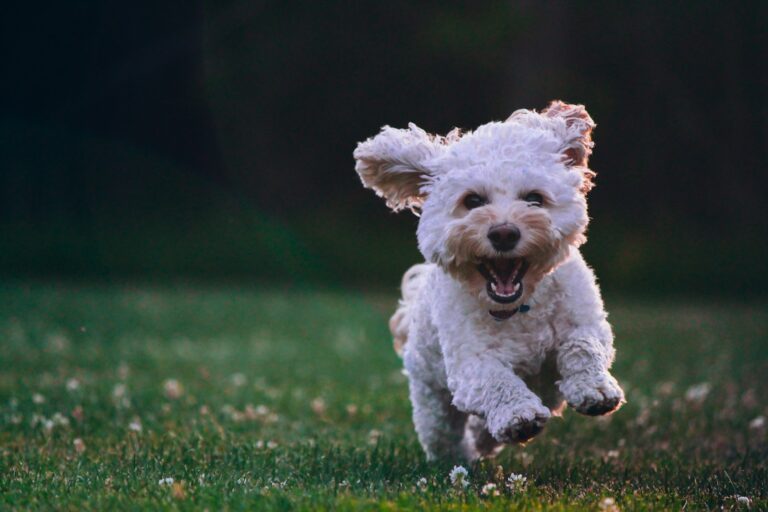10 Common Dog Behavior Problems and How to Fix Them
Are you a dog lover, but find yourself frustrated by your furry friend’s behavior at times? Don’t worry, you’re not alone! Dogs, like humans, have their own unique personalities and quirks, which can sometimes lead to behavior problems. From excessive barking to chewing on furniture, these issues can be challenging to deal with, but with patience and understanding, they can be resolved.
In this comprehensive guide, we’ll explore 10 common dog behavior problems and provide practical solutions to help you and your canine companion live harmoniously together. Whether you’re a seasoned dog owner or a first-time pet parent, this article will equip you with the knowledge and tools to address these issues effectively.
1. Excessive Barking
One of the most common behavior problems dog owners face is excessive barking. While barking is a natural form of communication for dogs, it can become problematic when it occurs excessively, disturbing neighbors or causing stress to the household. Here are some tips to address this issue:
- Identify the Trigger: Pay attention to what triggers your dog’s barking. Is it when someone comes to the door, or when they see other dogs passing by?
- Provide Distractions: Keep your dog occupied with toys or activities to redirect their focus away from barking.
- Training: Use positive reinforcement techniques to teach your dog the “quiet” command. Reward them when they stop barking on command.
2. Separation Anxiety
Dogs are social animals and can experience anxiety when left alone for extended periods. Separation anxiety can manifest in behaviors such as excessive barking, destructive chewing, or house soiling. Here’s how to address it:
- Gradual Desensitization: Practice leaving your dog alone for short periods and gradually increase the duration over time to help them adjust.
- Create a Safe Space: Provide a comfortable and secure environment for your dog when you’re away, such as a cozy crate or designated area.
- Seek Professional Help: If your dog’s separation anxiety is severe, consult a veterinarian or a certified animal behaviorist for personalized guidance.
3. Destructive Chewing
Chewing is a natural behavior for dogs, but it can become problematic when they target furniture, shoes, or other valuable items. Here’s how to curb destructive chewing:
- Provide Chew Toys: Offer a variety of chew toys to satisfy your dog’s natural urge to chew and redirect their attention away from inappropriate items.
- Supervise and Correct: Keep a close eye on your dog, especially in new environments, and intervene immediately if they start chewing on something they shouldn’t.
- Exercise and Mental Stimulation: Ensure your dog gets plenty of physical exercise and mental stimulation to prevent boredom, which can lead to destructive behavior.
4. Aggression Towards People or Other Dogs
Aggression in dogs can be frightening and dangerous, and it’s essential to address it promptly. Whether directed towards people or other dogs, aggressive behavior requires careful management and training:
- Identify Triggers: Determine what triggers your dog’s aggression and avoid those situations whenever possible.
- Consult a Professional: Aggression issues should be addressed with the help of a qualified dog trainer or behaviorist who can develop a personalized behavior modification plan.
- Safety Measures: Implement safety measures such as using a muzzle or leash to prevent your dog from causing harm while undergoing training.
5. Jumping Up
Many dogs have a habit of jumping up on people as a form of greeting, but this behavior can be undesirable, especially for children or elderly individuals. Here’s how to discourage jumping:
- Ignore and Redirect: Teach your dog that jumping up will not get them attention by turning away or crossing your arms when they attempt to jump.
- Reward Alternative Behaviors: Reinforce positive greeting behaviors, such as sitting calmly, with treats and praise.
- Consistency: Ensure that everyone in your household is consistent in their response to jumping behavior to avoid confusion.
6. Pulling on the Leash
Taking your dog for a walk should be an enjoyable experience for both of you, but if your dog pulls on the leash, it can quickly become frustrating. Here are some tips to teach loose leash walking:
- Use Positive Reinforcement: Reward your dog for walking calmly beside you by offering treats or verbal praise.
- Practice Patience: Be patient and consistent in your training efforts, as it may take time for your dog to learn proper leash manners.
- Consider Training Aids: Tools such as front-clip harnesses or head halters can help discourage pulling and provide better control during walks.
7. Begging for Food
It’s hard to resist those puppy-dog eyes, but allowing your dog to beg for food at the table can lead to unwanted behavior. Here’s how to discourage begging:
- Establish Mealtime Rules: Feed your dog at regular mealtimes and avoid giving them table scraps or treats while you’re eating.
- Ignore Begging Behavior: Refrain from rewarding begging behavior with attention or food, as this will only reinforce the habit.
- Provide Distractions: Keep your dog occupied during mealtime with a stuffed Kong toy or puzzle feeder to redirect their focus away from begging.
8. Fear or Anxiety
Just like humans, dogs can experience fear and anxiety in various situations, such as during thunderstorms or fireworks. Here’s how to help your dog cope with fear and anxiety:
- Create a Safe Haven: Provide a quiet and comfortable space for your dog to retreat to during stressful events, such as a cozy den or covered crate.
- Desensitization and Counterconditioning: Gradually expose your dog to the source of their fear in a controlled setting while offering rewards and reassurance to create positive associations.
- Consult a Professional: If your dog’s fear or anxiety is severe, seek guidance from a veterinarian or behaviorist who can recommend appropriate management techniques or medication.
9. Inappropriate Elimination
House soiling, whether it’s urinating or defecating indoors, is a common behavior problem among dogs, often stemming from medical issues or inadequate house-training. Here’s how to address it:
- Rule Out Medical Causes: Consult your veterinarian to rule out any underlying medical conditions that may be contributing to your dog’s house soiling.
- Consistent House-Training: Establish a regular schedule for bathroom breaks and reward your dog for eliminating in the appropriate location.
- Clean Accidents Thoroughly: Use enzymatic cleaners to remove any traces of scent that may attract your dog to repeat the behavior in the same spot.
10. Attention-Seeking Behavior
Some dogs resort to attention-seeking behaviors such as barking, whining, or pawing to get their owner’s attention. Here’s how to address attention-seeking behavior:
- Provide Adequate Exercise and Mental Stimulation: Ensure your dog’s physical and mental needs are met to prevent boredom and attention-seeking behavior.
- Ignore Unwanted Behavior: Refrain from rewarding attention-seeking behavior with attention or treats, as this will only reinforce the habit.
- Reward Calm Behavior: Reinforce calm and quiet behavior with attention and rewards to encourage your dog to seek attention in more desirable ways.
Conclusion
Understanding and addressing common dog behavior problems is essential for fostering a healthy and harmonious relationship with your furry friend. By implementing the tips and techniques outlined in this guide, you can effectively manage and modify your dog’s behavior, leading to a happier and more well-behaved pet. Remember, patience, consistency, and positive reinforcement are key to resolving behavior issues and strengthening the bond between you and your dog.
FAQs (Frequently Asked Questions)
- Q: Why does my dog bark excessively?
- A: Excessive barking can be caused by various factors, including boredom, anxiety, or the desire to alert their owners to perceived threats.
- Q: How can I stop my dog from chewing on furniture?
- A: Providing appropriate chew toys, supervising your dog closely, and ensuring they get enough physical and mental exercise can help curb destructive chewing behavior.
- Q: What should I do if my dog shows aggression towards other dogs?
- A: It’s essential to manage your dog’s environment to prevent conflicts and seek professional guidance from a qualified dog trainer or behaviorist to address aggression issues effectively.







